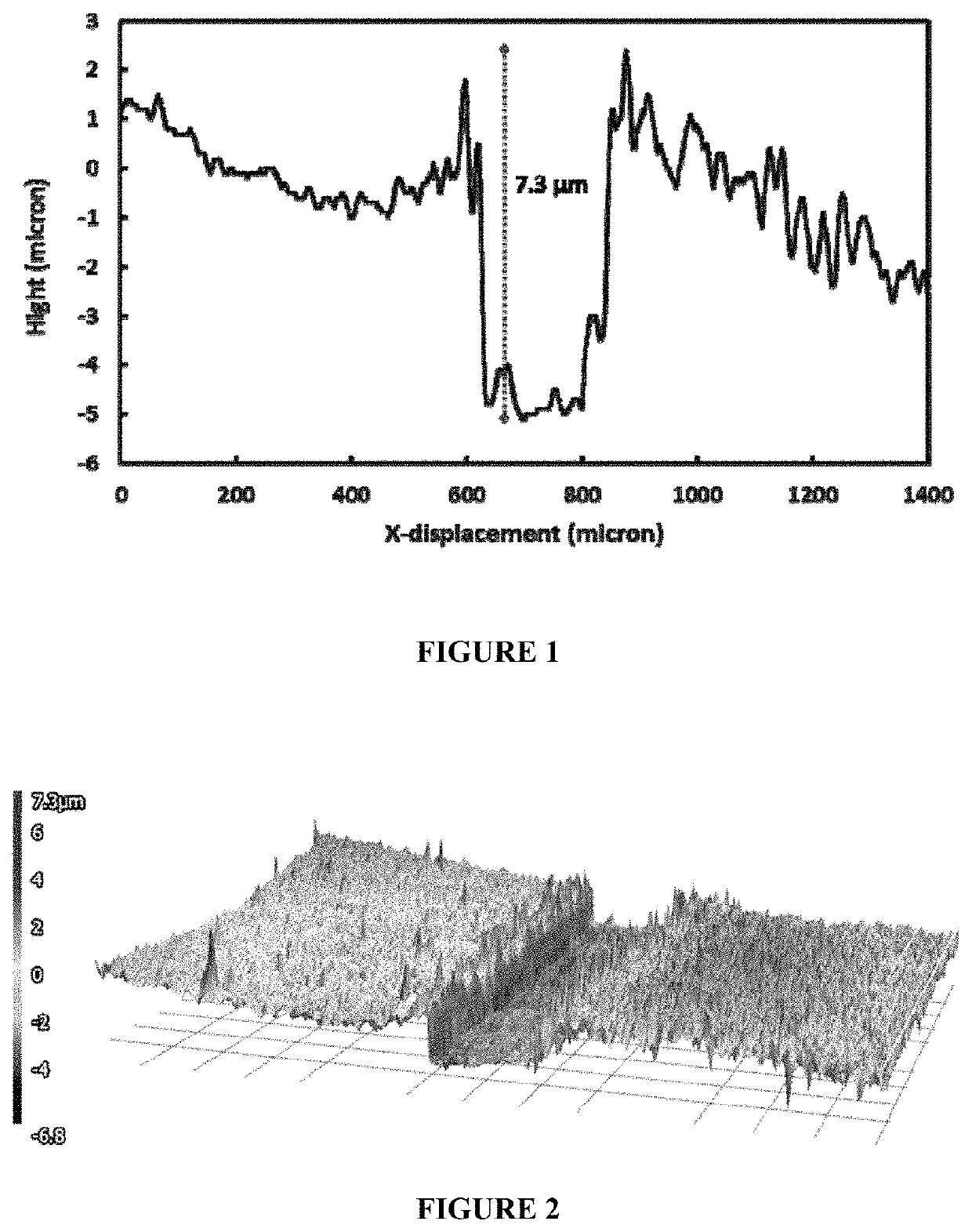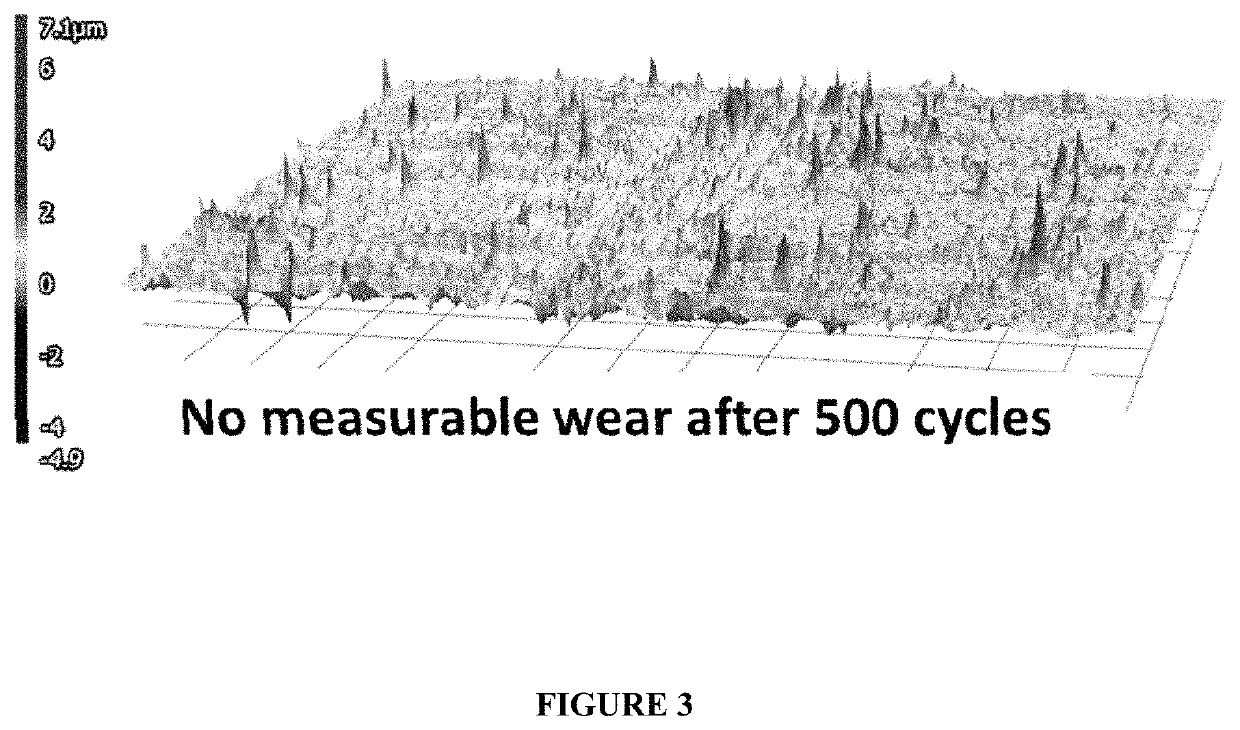Acidic aqueous silver-nickel alloy electroplating compositions and methods
a technology of aqueous silver and nickel alloy, applied in the field of acidic aqueous silvernickel alloy electroplating compositions and methods, can solve the problems of limited use of electrical connectors as contact finishes, physical damage of connectors, etc., and achieve low electrical contact resistance, good electrical conductivity, good electrical properties of silver deposits
- Summary
- Abstract
- Description
- Claims
- Application Information
AI Technical Summary
Benefits of technology
Problems solved by technology
Method used
Image
Examples
example 1 (
INVENTION)
[0052]An aqueous silver-nickel electroplating bath of the following composition was prepared:[0053]Silver methanesulfonate to supply 20 g / L silver ions[0054]2-mercaptosuccinic acid: 33.4 g / L[0055]Nickel sulfamate to supply 5 g / L nickel ions[0056]pH adjusted to 3
[0057]After electroplating, the electrodeposited coating appeared metallic and semi-bright. The silver-nickel alloy had a composition of 90% silver and 10% nickel.
example 2 (
INVENTION)
[0058]An aqueous silver-nickel alloy electroplating bath of the following composition was prepared:[0059]Silver methanesulfonate to supply 20 g / L silver ions[0060]2-mercaptosuccinic acid: 33.4 g / L[0061]1,1,3,3-tetramethyl-2-thiourea: 7.45 g / L[0062]Nickel sulfamate to supply 5 g / L nickel ions[0063]pH adjusted to 3.5
[0064]After electroplating, the electrodeposited coating appeared metallic and bright. The silver-nickel alloy was composed of 97.5% silver and 2.5% nickel.
example 3 (
INVENTION)
[0065]An aqueous silver-nickel alloy electroplating bath of the following composition was prepared:[0066]Silver methanesulfonate to supply 20 g / L silver ions[0067]2-mercaptosuccinic acid: 33.4 g / L[0068]3,6-Dithia-1,8-octanediol: 10.14 g / L[0069]Nickel sulfamate to supply 5 g / L nickel ions[0070]pH adjusted to 3
[0071]In this example, plating was performed at 3 ASD for 2 minutes. After electroplating, the electrodeposited coating appeared metallic and bright. The silver-nickel deposit was composed of 95% silver and 5% nickel.
PUM
| Property | Measurement | Unit |
|---|---|---|
| pH | aaaaa | aaaaa |
| standard reduction potential | aaaaa | aaaaa |
| acceleration | aaaaa | aaaaa |
Abstract
Description
Claims
Application Information
 Login to View More
Login to View More - R&D
- Intellectual Property
- Life Sciences
- Materials
- Tech Scout
- Unparalleled Data Quality
- Higher Quality Content
- 60% Fewer Hallucinations
Browse by: Latest US Patents, China's latest patents, Technical Efficacy Thesaurus, Application Domain, Technology Topic, Popular Technical Reports.
© 2025 PatSnap. All rights reserved.Legal|Privacy policy|Modern Slavery Act Transparency Statement|Sitemap|About US| Contact US: help@patsnap.com


